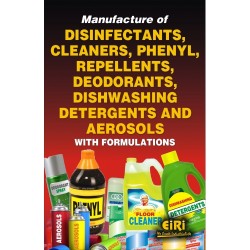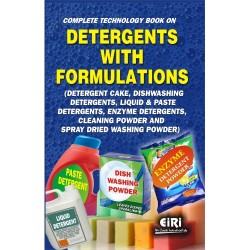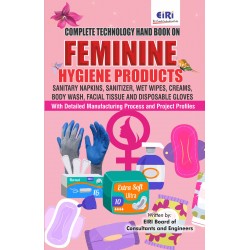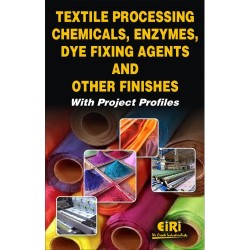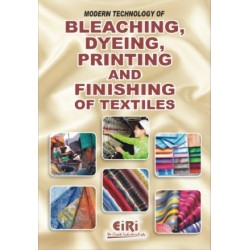technology of textiles spinning & weaving, dyeing, scouring, drying, printing and bleaching (hand book)

- More than 45 years of experience
- Managed by expert industrial consultants
- ISO 9001-2015 Certified
- Registered under MSME, UAM No: DL01E0012000
- 24/5 Research Support
Get your quesries resolved from an industry expert. Ask your queries before report or book purchase. - Custom Research Service
Speak to the our consultant to design an exclusive study to serve your research needs. - Quality Assurance
All reports are prepared by highly qualified consultants & verified by a panel of experts. - Information Security
Your personal & confidential information is safe & secure.
TECHNOLOGY OF TEXTILES SPINNING & WEAVING, DYEING, SCOURING, DRYING, PRINTING AND BLEACHING
CONSTRUCTION OF FABRIC
Fabrics Made from Solutions
Fabric Made Directly from fibres
Fabrics Made from Yarns
Composite Fabrics
Foam and Fibre Fabric
Multicomponent Fabrics
CLASSIFICATION OF YARN
Yarn types
Yarn Size
Number of Parts
Yarn Twist
Novelt and Specially Yarns
SPINNING FUNDAMENTALS
Technological Analysis of Spinning
Fundamental equations
structural formation during spinning
Fiber structure
Slmulation of high speed spinning
NONWOVENS SPINNING
Supundbonded Process
Meltblown Process
SPINNING OF ULTRA FINE FIBERS
Outline of Ultra Fine Fibre Products
Manufacturing Process for ultra fine fibres
Spinning of the continuous tilament type
Random type spinning
INTRODUCTION
Textile Fibres
Fabrics
TEXTILE FIBRES PROPERTIES
Important Properties of Fibres
Fibre Shape and Strength of Yarns
Plasticity and Thermoplasticity
Lustre
Fibre Density
Solubility in Various Solvents
Attinity for Dyes
Fibre Structure
Thie Special Properties of
Synthetic Fibres
TEXTILE DYEING
Dyeing Machines
Basic Dyestuffs
Acid Dyes
Mordant Dyestuffs
Direct Dyestuffs
Procion Dyes
Sulphur Dyestuffs
Vat Dyestuffs
The Azoic Dyes
Aniline Black
Mineral Colours
Dispersed Dyes
SCOURING
Introduction
Acid and Alkali
Soaps
Scouring and Bleaching
Cotton
Singeing
Desizing
Flax
Manufactured Fibres
Wool
Silk
DYRING OF FABRIC
Mechanical Removal
TEXTILE PRINTING
Block Printing
Batik Printing
Rotary Block Printing
Screen Printing
Roller Printing
Direct Printed Styles
Cover Printing
The Dyed Style
The Resist Style
The Discharge Style
Acetate Rayon Printing
Wool Printing
Silk Printing
BLEACHING OF TEXTILE
Introduction
Cotton
Flax
Manufactured Fibres
Wool
TEXTILE PRODUCTS
Selectrion of Textile Products
Influence of Fibres on Textile Performance
Influence of Yarns of Textile Performance
Influence of Fabric Construction on Textile Performance
Influence of Finishes on Fabric Performance
Care of Textile Products
Fabric Care Labels
SUPER ABSORBENT POLYMERS: PROPERTIES AND APPLICATIONS
Mechanism of Absorbency
Capillary Mechanism
Diffusion Mechanism
Dissolution Diffusion Mechanism
Transitional Mechanism
Classification
Cellulose Based SAPS
Starch Based SAPS
Synthetic of Superabsorbents
Cellulose Based Superabsorbents
Starch Based Superabsorbents
Synthetic Superabsorbents
Basic Properties
Physical Forms
Evaluation of Superabsorbents
Absorbency or Swelling Measurement
Suction Power
Rewet of Wet Back
Water Retention
Application Areas
Personal Care Products
Agriculture and Soil Protection
Medical Field
Nonwoven Applications
Disposable Incontinence Products
Wipes and Absorbent Pads
Disposal Containers
Drapas
Yarn Applications
Sheet Like Structures
Absorbents with Structural Stability
Absorbents with Reduced Wrinkles
Absorbent Composite Materials
Superabsorbents in Needlepunch Felts
Moisture Control Packaging
Filtration
Conclusion
ULTRASONIC DYEING OF COTTON WITH REACTIVE DYES
Experimental
Dyeing with Reactive Dyes
Results and Discussion
Conclusion
COMMON PROBLEMS & SOLUTION IN ENZYME/GARMENT WASHING
Streaks
Backstaining
Rinsing/Clean up Cycle
Tensile Strength/Fraying
Yellowing/Dullness
Variations
Hand Feel
Smell
INDIAN VS IMPORTED COTTON
Cotton from south India
Indian Vs Imported Cotton
Cotton from Member Mills
Comparison of Major Fibre Properties of Two Seasons
Imported Cottons Vs Indian Cottons
MECHANICAL STRUCTURE PROBLEMS OF STAPLE YARNS
The yarn
Determination and Modeling of Yarn Structure
Reslationship between Fineness, Twist and Yarn Diameter
Porosity and Equivalent Diameter of Pores between Fibres
Number of Fibres in Cross Section and Coefficient K
Yarn Contraction
Internal Fibre Arrangement in Yarn Principle of Experimental Methods
Radial Packing Behaviour and Blend Ratio
Component Structure Assembly of Fibres in Blended Yarn
Remarks on Yarn hairiness
Yarn Mass Irregularity
Structural Relationship of Mechanical Properties of Yarn
Yarn Strength and Span Length
Fibre Utility and Yarn Tensile Strength
Effect of fibre inclination and substance tension force utility
Effect of Fibre Extension variability on Substance strength utility
Yarn Hardness
Further Mechanical Properties
SULZER M8300 ADVANTAGE MULT PHASE WEAVING
At the limit
The Solution Multi Phase Weaving
Shed Formation
Welt Insertion
Welt Beat up and Salvedge formation
Modular Macine Concept
Advantages of the M8300 Multi Phase Weaving Machine
New Drive and Control Technology
Selective Market Launch
THE ABC OF DENIM PRODUCTION
History of Denim
Yarn Preparation for Denim
Chemical Reaction of Cotton with indigo Dyestuff
Indigo Dyeing of Warp yarns
Rope Dyeing
Slasher Dyeing
Sizing
Weaving
Denim Finishing
Compressive Shrinking of Denim
Integrated Finishing and Shrinking
Washing of Denim Fabric
Bio Technology
Stone Washing
Desizing
Bio Abrasion
Backwash
Additional Bleach
Hypochlorite Bleaching
Finishing
Enzymatic Denim Washing
Finished Fabric Inspection
DEVELOPMENT OF YARN INTEGRATED INDEX
Literature Review
Experimental Plan
Methods
Results & Discussion
IMPROVING DYE UPTAKE OF NATURAL FIBRES
Cotton
Wool
Silk
PROPERTIES OF POLYESTER OE ROTOR AND DREF-3 SPUN YARNS
Materials and Methods
Proparation of yarn Samples
Tests
Results and Discussion Tenacity and Initial Modulus
Breaking Extension
Abrasion Resistance
Flexural Rigidity
Elastic Recovery
Mass Irregularity and Imperfections
Conclusion
SUITABILITY FOR AUTOMATED GARMENT MANUFACTURING MILL VS. POWERLOOM FABRICS
Comparison of Tailorability of Powerloom woven Fabrics with Mill Woven Fabrics with Mill Woven Fabrics as Evaluated on FAST:
Conclusion
MODERN DEVELOPMENTS IN KNITTING TECHNOLOGY
Flat Vs Circular: The Kniwear Debats
The Circular Garment Reply
Significant Developments in Knitting
Tsudakoma's Carriageless Knitting Machine
Yarn Feed Technology
MPF-K Positive feeders
LMW 2 Fabric Scanner
Advantages
Thread laying on Circular Warp Knitting Machine
Non-ladder chain suitch
Par excellence Modern Knitting Machine
4-Cam Knitting Machine
Keum Yong KSBP-TH Plaited Loop Single Knitting Machine
SMC-101 Computerised Jacquard Flat Knitting Machine
Conclusion
PROCESSING OF LYOCELL FIBRES
Fibre Production
Fibre Forming Process
Properties of Tencel Fibre
Strength
Crystallinity
Cross section
Handle or feel
Thermal properties
Chemical properties
Fbriliation
Primary fibrillation
Secondary fibrillation
Development of yarn fibrillation
Fibrillation Control
Processing of Lyocell
Pretreatment of Lyocell
Effect of Fibre Swelling on Structure of Fabrics
Alkali Treatment
Desizing Bleachin Causticisation Process
Dyeing
Dyeing with Reactive Dyes
Direct dyes
Sulphur dyes
Cold pad batch dyeing
Garment dyeing
Reactive printing
Wash Behaviour of Lyocell in Garment and Home Laundering
Resin Finishing
Effect of Softening Agents
Advantage of Tencel
Uses and Application
Future prospects and Development
Wet Cleaning of Tencel/Lyocell
Tencel A-100 New Development Conclusion
TRENDS IN KNITS PROCESSING
Today's Trend
Preparation of Knits
Future Trends
Dyeing of Knits
Dyeing Machines
Dyeing Process
LS Dyeing
Vat Dyeing
Pigment Dyeing
Cross Dyeing of 100% Cotton knit Garments
Futuretrends
Printing
Finishing
Machinery Developments Relaxation Dyers
Shrinkage Contro Through Compacting
Various Developments in the Compacting Machines are:
Softening
Bio Polishing
Antimicrobial Finish
Finishing of knits containing elastanes
Conclusion
ANTIBACTERIAL FABRICS
Wool Fabric Finishing
Plasma Modification
PRETREATMENT & DYEING OF FIBRE BLENDS WITH ELASTANE
General precautions
Processing routes
Circular Knits
Scouring
Dyeing Equipment
Polyamide/Elastane Blends
Polyester/Elastane Blends
Cellulose/Elastane Blends
Wool/Elastane Blends
Summary
WEAVING
High Production Looms
Flexibility
Application of Electronic Control Mechanism
Minimum Downtime
Other Developments
Indian Scenario in Weaving
SITRA Development Projectile Loom
Conclusion
NON-APPAREL APPLICATIONS OF WEFT KNITTED FABRICS
Interior Design
Filtration
Silver Knitting Applications
Various Non-apparel Applications
Bi-axially Reinforced Multilayer weft Knitted Fabric
Knitted Fibre Reinforced
Thermo Plastics
Knitted Geo textiles
Space Textile
Automotive Textile
Conclusion
AQUATEX THE UL TIMATE IN FINISHING OF UPHOLSTERY
Upholstery fabrics
Main Advantages of the Interspun Enhancement
MAKING SILK FABRIC WRINKLE FREE
Importance of Work
Purposes of Research
Conclusion
PROCESSING TECHNOLOGY FOR COTTON GARMENTS
Preparatory Techniques
Dyeing Procedure
Selection of Dyes
Garment Dyeing Machinery
Quality Control in Garment Dyeing
Finishing
Conclusions
ROTARY PRINTING & DYEING ON COTTON/SYNTHETIC TEXTILE
Introduction
Manufacturing process
Drying
Dyeing
Printing of Cotton Fabric
Details Rotary or Roller Printing Machines
Operating Precautions
Preparation of Fabric for Printing
Cotton
Nylon and Terylene Plyester Fibre
Printing Procedures
Preparation of the Printing Paste
Thickening Agents
Drying After Printing
Plant Economics
HOSIERY AND TEXTILE CLOTH PROCESSING AND HOSIERY GARMENTS MANUFACTURING (COMPOSITE MILL)
Introduction
Manufacturing Process
Bleaching
Rinsing or Washing
Drying
Dyeing
Printing of Cotton Fabric
Finishing
Details of Scouring Process
Cotton
Singeing
Desizing
Scouring
Details of Bleaching Process
Bleaching
Hydrogen Peroxide
Details of Drying Process
Mechanical Removal
Drying
Details of Dyesing Process
Dyeing Machines
Mordant Dyestuffs
Direct Dyestuffs
Vat Dyestuffs
Printing of Textiles
Methods of Printing
Roller Printing
Screen Printing
Spray Printing
Styles of Printing
Plant Economics
READYMADE GARMENTS
Introduction
Manufacturing Process in Brief
Manufacturing of Men's Shirts
Manufacturing Process in Detail for Ladies Dresses, Shirts and Trousers
Design
Cutting Process
Sewing Production
Fusing and Cementing Pressing and Molding Processes
Manufacturing of Ladies Dresses
Production Equipment
General
Manufacturing Process of Pantaloon (Trouser)
Plant Economics
HOSIERY PRODUCTS LIKE VESTS, BRIEFS, T-SHIRTS, AND SOCKS (HOSIERY & SOCK NYLON) COTTON KNITTING
Introduction
Details of Sizes of Hosiery Items
Sizes Briefs
Process of Manufacture
Features of process
Rib Fabrics
Fabric Width
Bleaching Process and its Sailent Features
Manufacture of underwears
Manufacture of Underwears, Briefs & Panties
Manufacture of Vests or Banyans
Plant Economics
Plant & Machinery
POWER LOOMS
Introduction
The Weaving Process
Manufacturing Process
Raw Materials
Process
Processing
The Loom
Modern Developments
Power Driven Looms
Basic Weaves
Tipsily Weave
Twill Weave
Satin Weave
Working of the Loom
Loom Tuning
Shuttle Flight
Faulty Spools
Broken Ends
Shedding & Picking
Side Weft fork Motions
Bleaching Systems
Central Weft fork motions
Electrical Warp Stop Motions
Tamples & Feltings
Weft Feelec Motions
Selvedge Motions
Plant Economics
SOCKS KNITTING
Introduction
Manufacturing Process of Socks on Automatic Socks Knitting Machine
Plant Economics
TEXTILE DYEING AND PRINTING (JOB WORK)
Plant Economics
NECK TIE
Manufacturing Process
EMBROIDERY YARN (VISCOSE BASED YARN)
Process of Manufacture
Spinning
Plant Economics
SUPPLIERS OF TEXTILE MACHINERY
Spinning Machinery
Printing Machinery
Weaving
Winders Textile
Bleaching Machinery Textile
Hosiery Machinery
Sewing Machinery
Yarn Machinery
Cloth Finishing Machinery
Cloth Calendering Machine
SUPPLIERS OF TEXTILE CHEMICALS
SUPPLIERS OF TEXTILE DYES
SUPPLIERS OF COTTON CLOTH
TEXTILE MACHINERY AND PARTS ADDRESSES
Engineers India Research Institute (EIRI) is a renowned name in the industrial world for offering technical and financial consultancy services.
EIRI services are:
Detailed Feasibility Reports
New Project Identification
Project Feasibility and Market Study
Identification of Lucrative Industrial Project Opportunities
Preparation of Project Profiles / Pre-Investment and Detailed Feasibility Studies,
Market Surveys / Studies, Market Survey Cum Detailed Techno-Economic Feasibility Reports
Project Reports in CD Roms
Identification of Plant /Process/Machinery and Equipment, Industrial General Guidance for setting up new industrial projects.
Our most up-to-date and Technologically Advanced Industrial Project Reports, categorized with respect to Financial Outlays and Sector – wise Classification are immensely useful for :
Existing Small or Medium Scale Industrialists facing competition from large houses
Young Entrepreneurs dreaming to start their own industrial enterprise
Young Graduates and Professionals wishing to begin their career
Industrialists interested in Debottlenecking their capacities & New Product – Lines
Large Industrial Houses pursuing Expansion, Growth and Diversification Plans
How to Make Project Report?
Detailed Project Report (DPR) includes Present Market Position and Expected Future Demand, Technology, Manufacturing Process, Investment Opportunity, Plant Economics and Project Financials. comprehensive analysis from industry covering detailed reporting and evaluates the position of the industry by providing insights to the SWOT analysis of the industry.
Each report include Plant Capacity, requirement of Land & Building, Plant & Machinery, Flow Sheet Diagram, Raw Materials detail with suppliers list, Total Capital Investment along with detailed calculation on Rate of Return, Break-Even Analysis and Profitability Analysis. The report also provides a birds eye view of the global industry with details on projected market size and then progresses to evaluate the industry in detail.
We can prepare detailed project report on any industry as per your requirement.
We can also modify the project capacity and project cost as per your requirement. If you are planning to start a business, contact us today.
Detailed Project Report (DPR) gives you access to decisive data such as:
- Market growth drivers
- Factors limiting market growth
- Current market trends
- Market structure
- Key highlights
Overview of key market forces propelling and restraining market growth:
- Up-to-date analyses of market trends and technological improvements
- Pin-point analyses of market competition dynamics to offer you a competitive edge major competitors
- An array of graphics, BEP analysis of major industry segments
- Detailed analyses of industry trends
- A well-defined technological growth with an impact-analysis
- A clear understanding of the competitive landscape and key product segments
Need Customized Project Report?
- Ask for FREE project related details with our consultant/industry expert.
- Share your specific research requirements for customized project report.
- Request for due diligence and consumer centric studies.
- Still haven't found what you're looking for? Speak to our Custom Research Team
About Engineers India Research Institute:
Note: We can also prepare project report on any subject based on your requirement and country. If you need, we can modify the project capacity and project cost based on your requirement.
Our Clients

Our Approach
- Our research reports comprehensively cover Indian markets (can be modified as per your country), present investigation, standpoint and gauge for a time of five years*.
- The market conjectures are produced on the premise of optional research and are cross-accepted through associations with the business players
- We use dependable wellsprings of data and databases. What's more, data from such sources is handled by us and incorporated into the report
Why buy EIRI reports?
- Our project reports include detailed analysis that help to get industry Present Market Position and Expected Future Demand.
- Offer real analysis driving variables for the business and most recent business sector patterns in the business
- This report comprehends the present status of the business by clarifying a complete SWOT examination and investigation of the interest supply circumstance
- Report gives investigation and top to bottom money related correlation of real players/competitors
- The report gives gauges of key parameters which foresees the business execution
























